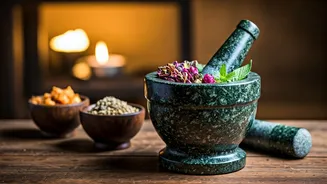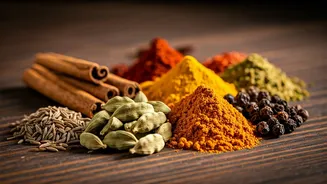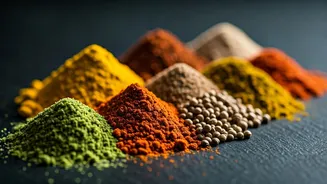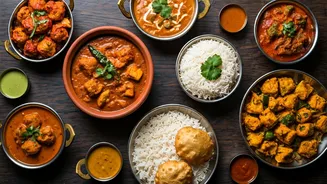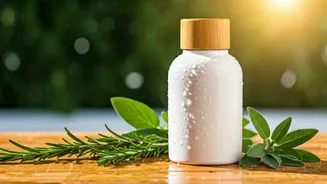Ancient Traditions Unveiled
Bihar, a state in eastern India, holds a treasure trove of ancient beauty practices, largely influenced by its rich history and cultural diversity. These
rituals, passed down through generations, were and continue to be an essential part of daily life and special occasions, showcasing a deep connection to nature and a holistic approach to well-being. Unlike modern beauty trends that prioritize quick fixes, Bihari beauty rituals emphasize natural ingredients and long-term care, emphasizing inner beauty and spiritual connection. The focus is on embracing natural radiance and promoting overall wellness, making these practices a unique aspect of Bihari culture. These practices often involve specific times of the year and special occasions, highlighting their importance in community life and the preservation of cultural identity. The significance of these rituals goes beyond mere aesthetics; they represent a way of life, intertwining beauty with spirituality, health, and a profound respect for the natural world, representing a holistic approach that celebrates the interconnectedness of body, mind, and spirit.
Natural Ingredients Revealed
The cornerstone of Bihari beauty rituals lies in the use of natural ingredients readily available in the region. These ingredients, often sourced from the surrounding environment, are celebrated for their effectiveness and gentle nature. Turmeric, or 'haldi,' is a staple, valued for its antiseptic and skin-brightening properties, often incorporated into face masks and body scrubs. Gram flour, or 'besan,' serves as a natural exfoliant and cleanser, removing impurities and leaving the skin smooth and radiant. Sandalwood, or 'chandan,' known for its cooling and soothing effects, is used to calm the skin and add a delicate fragrance. Milk, honey, and rosewater are other key components, offering moisturizing, softening, and rejuvenating benefits. These natural ingredients, combined with specific preparation methods, create potent concoctions that address various skincare needs, ranging from acne and blemishes to dryness and uneven skin tone. The use of natural ingredients aligns with a broader philosophy of living in harmony with nature, promoting a sustainable and healthy approach to beauty and self-care. Moreover, these ingredients have symbolic meanings, often representing purity, prosperity, and spiritual well-being.
Rituals for Radiant Skin
Bihari beauty rituals incorporate various practices designed to achieve glowing, healthy skin. Daily skincare routines often include cleansing with gram flour and turmeric paste to remove impurities and brighten the complexion. Regular exfoliation, using gentle scrubs made from natural ingredients, removes dead skin cells, promoting cell turnover and revealing smoother skin. Face masks, prepared with a mix of turmeric, sandalwood, honey, and milk, are used to nourish, hydrate, and balance the skin, addressing specific concerns such as acne or dryness. Massaging the skin with natural oils, such as coconut or sesame oil, is another key practice, improving circulation and promoting relaxation. These routines are not just about superficial appearance; they are a form of self-care and a way of connecting with one's body. The consistency and regularity of these rituals, performed over time, contribute to a healthy, radiant complexion that reflects inner vitality and well-being. These practices emphasize the importance of listening to one's body and adopting a holistic approach to beauty, integrating skincare with overall health and spiritual practices.
Hair Care Secrets
The people of Bihar also have unique hair care practices that contribute to strong, lustrous hair. Traditional hair treatments often involve the use of natural oils, such as coconut, sesame, and amla oil, to nourish and condition the hair. These oils are typically massaged into the scalp, promoting hair growth, preventing premature graying, and adding shine. Hair masks, prepared with ingredients like henna, amla, shikakai, and reetha, are used to strengthen hair, add volume, and provide natural color. Henna is particularly significant, as it not only colors the hair but also conditions it, offering a natural and chemical-free alternative to commercial hair dyes. Regular washing with natural shampoos, often made from herbs and plant extracts, keeps the hair clean and healthy without stripping away its natural oils. These hair care rituals, like skincare practices, emphasize the use of natural, gentle ingredients that are easily accessible, reinforcing the connection with nature. Furthermore, they reflect an understanding of the importance of holistic care, considering not just the appearance of the hair but also its overall health and well-being.
Makeup and Adornment
In Bihar, makeup and adornment play a vital role in enhancing beauty, especially during festivals and special occasions. Traditional makeup emphasizes natural beauty, often highlighting the eyes and lips. Kohl, or 'kajal,' is a staple, used to accentuate the eyes and add a touch of drama. Lips are often adorned with natural colors, sometimes derived from plant-based pigments or turmeric. The use of elaborate jewelry, including necklaces, bangles, earrings, and nose rings, is another distinctive feature, adding elegance and charm. These ornaments, often made of gold, silver, or precious stones, symbolize status, cultural heritage, and auspiciousness. The use of flowers, particularly jasmine and marigolds, to adorn the hair is also common, adding fragrance and beauty. The overall approach to makeup and adornment reflects an understanding of the power of beauty to express identity, celebrate cultural traditions, and enhance confidence. These practices are not superficial; instead, they represent a deeper connection to cultural heritage and a celebration of feminine beauty.
Evolution and Modernity
While traditional Bihari beauty rituals remain significant, they are evolving alongside the influence of modernity. While the core principles of using natural ingredients and holistic care are maintained, some individuals incorporate modern skincare and hair care products into their routines. The accessibility of international brands and beauty trends introduces new elements to these practices. However, the emphasis on natural, time-tested methods remains strong, with a growing awareness of the benefits of using traditional ingredients. There is a renewed appreciation for these practices, especially among the younger generation, who are eager to embrace their cultural heritage. The internet and social media platforms have further spread awareness of Bihari beauty rituals, with many people sharing tips and recipes. The interaction between traditional and modern approaches creates a dynamic interplay, where old practices are refreshed with new knowledge and products. This adaptation reflects the ability of Bihari beauty traditions to remain relevant and appreciated in a constantly changing world, offering a balance between tradition and innovation.
